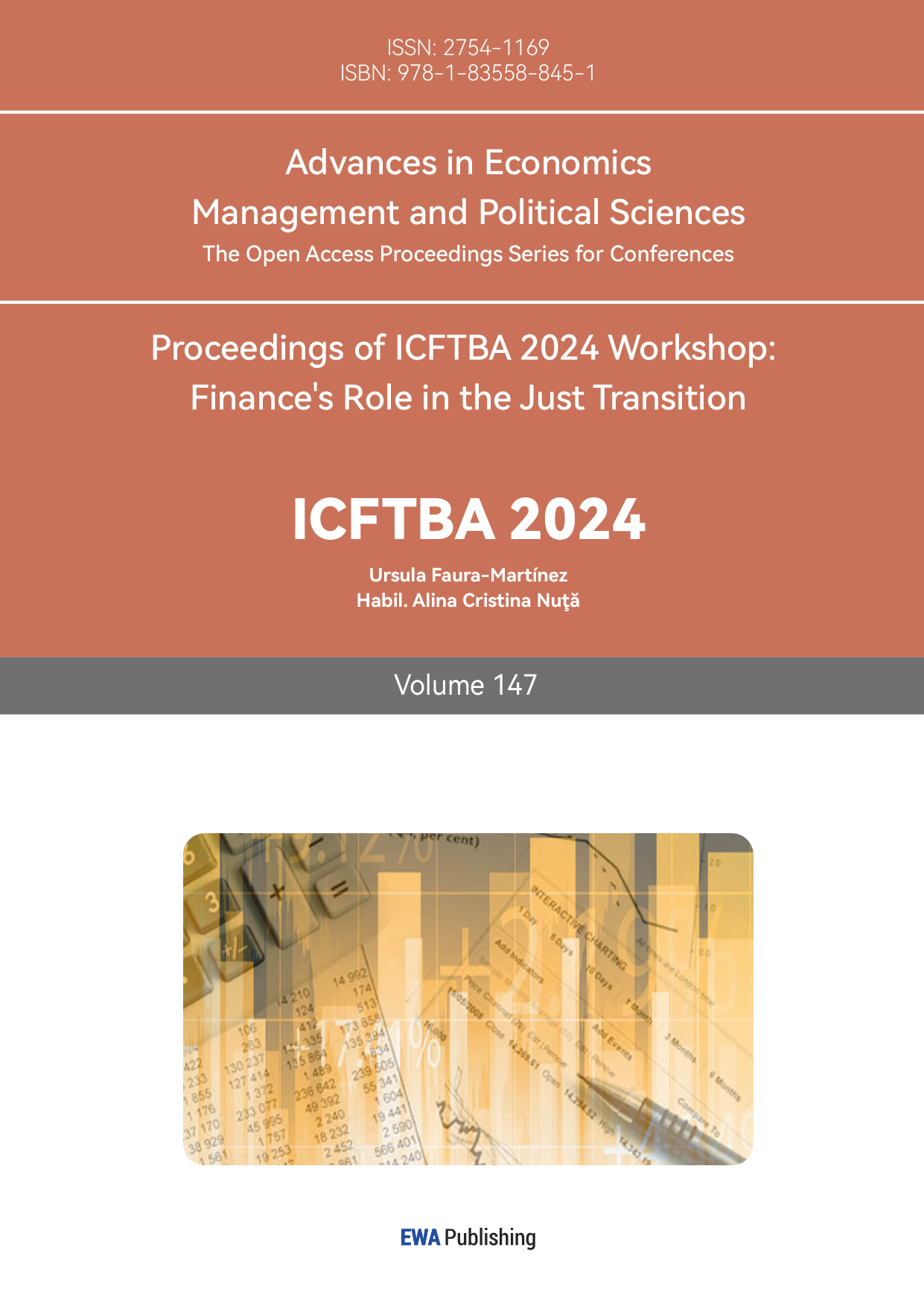1. Introduction
The COVID-19 pandemic has caused profound disruptions to global health, economies, and social structures. Beyond its physical health implications, the pandemic has had notable psychological effects, leading to increased rates of mental health disorders such as depression, anxiety, and obsessive-compulsive disorder (OCD). The widespread implementation of lockdowns, social distancing, and economic instability have intensified feelings of uncertainty, isolation, and stress. In this context, the mental health of populations has become an urgent area of study, particularly in countries like Canada, where public health measures were introduced early and sustained for long periods.
Numerical studies have shown that this rise in mental health issues was not only expected but indeed materialized globally. Based on the World Health Organization (WHO), the rates of anxiety and depression rose by 25% during the initial year of the pandemic.[1], largely driven by factors such as social isolation and financial insecurity. Younger populations and women were particularly vulnerable to these stressors. Similarly, a systematic review published in the BMJ examined data from 134 cohorts and found substantial increases in anxiety and depression symptoms compared to pre-pandemic levels [2]. These findings underscore the pandemic's severe psychological impact across various demographic groups.
However, a thorough, time-bound analysis of public concern—especially as reflected in online behaviors—remains underexplored. Online search trends offer a unique window into the public’s evolving mental health concerns in real time, providing insight into how collective anxieties shift in response to major events. Given the increasingly digital nature of health information-seeking behaviors, this study seeks to analyze how the Canadian public’s interest in mental health topics fluctuated during the pandemic, using weekly Google Trends data from 2016 to 2020.
The mean purpose of this research is to apply time series analysis methods to examine the impact of the pandemic on search behaviors related to mental health. Using techniques such as Seasonal-Trend Decomposition, Auto-Regressive Integrated Moving Average modeling, and change point detection, this study analyzes shifts in public interest surrounding key mental health terms like “depression,” “anxiety,” and “insomnia.” By identifying deviations from pre-pandemic patterns, this research provides a quantitative assessment of how and when public concerns peaked during the pandemic.
This study contributes to the growing body of literature by focusing on the intersection of public health crises and mental health, offering data-driven insights into the evolution of mental health concerns during an unprecedented global event. Understanding these patterns is critical for public health policymakers and mental health professionals seeking to mitigate the long-term psychological effects of the pandemic and prepare for future crises.
2. Data Preparation
To assess the impact of the COVID-19 pandemic on mental health in Canada, this study used weekly internet search data from 2016 to 2020, focusing on mental health-related keywords. The data we used to estimate the interest was sourced from Google Trends, which provides normalized search interest scores on a scale from 0 to 100. Keywords like "depression," "anxiety," "obsessive-compulsive disorder (OCD)," and "insomnia" were selected and focused when we processing analysis.
Handling missing data was a really important step. The missing values in the dataset were dealt with using linear interpolation, which is a method that estimates the missing parts by looking at the linear trend in the surrounding data. This helped make sure that any gaps in the time series didn’t mess up the analysis, kept the data consistent, and reduced the chances of skewing the results.
Once the data was cleaned and the missing values were handled, we split the dataset into two time periods: pre-pandemic (2016-2019) and pandemic (2020). It allowed us to directly compare these two phases and helped us figure out the specific effects of COVID-19 on public interest in mental health.
3. Methods
This study uses weekly search interest data from Google Trends [3] to assess public concerns about mental health issues in Canada from 2016 to 2020. Three key methods were applied to analyze the data: Seasonal-Trend Decomposition, ARIMA modeling, and change point detection. These methods are widely used in public health research to track behavioral trends, especially during major events like the pandemic [4].
3.1. Data Processing
The data was collected from January 2016 to December 2020. Missing values were dealt with using linear interpolation to keep the time series continuous. Then, the dataset was split into two segments.
3.2. Time Series Decomposition
The Seasonal-Trend Decomposition using Loess (STL) was used to break each time series into trend, seasonal, and residual components. STL is a useful tool for analyzing complex time series with seasonal patterns because it allows for flexible decomposition without needing the data to be stationary [5]. Based on Ouyang’s study of the necessary of STL in Arima modeling analysis, this methods has been shown to improve how we interpret time series data, especially in public health research where seasonal changes are common [5].
3.2.1. Trend Component
This component shows the long-term trend in search interest, revealing whether public concern about mental health issues is going up or down over time. Spotting changes in this trend can help us understand the overall impact of the pandemic on mental health awareness.
3.2.2. Seasonal Component
This component identifies regular, repeating patterns throughout the year, like seasonal changes in search behavior (for example, more searches for "depression" during winter). Analyzing the seasonal component helps determine if these usual patterns were affected or amplified during the pandemic.
3.2.3. Residual Component
This component shows the irregular or random changes in search interest that aren't explained by the overall patterns. Large deviations can suggest external events, like the COVID-19 pandemic, that cause unexpected shifts in public interest. The STL decomposition was applied to the weekly search data for each mental health term. The results were used to visualize and analyze the trend, seasonal, and irregular components, with a focus on spotting changes that happened around early 2020.
3.3. ARIMA Modeling
To predict how mental health concerns might have changed without the pandemic, Auto-Regressive Integrated Moving Average (ARIMA) models were used on the pre-pandemic data. ARIMA modelling is a useful tool, as it can account for underlying trends, autocorrelation and seasonality [6]. The performance of these models was measured using accuracy metrics like RMSE and MAE.
3.3.1. Model Selection
The ARIMA model parameters were chosen based on statistical measures like the AIC to make sure the model fit the data well. In this case, the auto.arima function was used to find the best ARIMA model. The model was fitted with pre-pandemic data (2015-2019) to create a baseline trend to assume that the pandemic hadn’t happened.
3.3.2. Forecasting and Comparison
Forecasts for 2020 were created using the fitted ARIMA model. These forecasted values showed what the search behavior would have been like if the pandemic hadn’t happened, offering a counterfactual scenario. Then, we compared the forecast with the actual search data from 2020 to see if there were any differences. The gaps between the predicted and actual values were measured using error metrics like MAE and RMSE. Significant differences between the forecasted and real values suggested that the pandemic likely caused an increase in public concern about certain mental health conditions.
3.4. Change Point Detection
To spot major changes in search trends for mental health terms, the Cumulative Sum (CUSUM) method was used. CUSUM is well-known for its efficiency in identifying shifts in time series data, especially in public health monitoring. It tracks cumulative deviations from the expected mean, which makes it great for finding sudden changes in behavior or activity over time. This method has been successfully used in different public health areas, like detecting disease outbreaks and tracking mental health trends [7-8]. Based on these studies, CUSUM is especially helpful for quickly identifying structural breaks in the data, which matched the changes seen during the pandemic.
3.4.1. Methodology
The Cumulative Sum Control Chart (CUSUM) method is especially useful for finding small and gradual shifts in the average level of a time series. This approach can help to detect change points where there are significant changes in search trends, which often align with major events or interventions that occurred during the pandemic.
3.4.2. Application
Change point detection was used on the 2020 data for each mental health term, focusing on finding points that matched key pandemic events, such as the announcement of a national emergency, the beginning of lockdowns, and the later waves of COVID-19. A sensitivity analysis was done to make sure the identified change points were reliable, confirming that the results stayed consistent even when using different parameter settings.
4. Results
4.1. STL Decomposition Results

Figure 1: STL Decomposition for Depression Search Trends. (Picture Credit: Original)
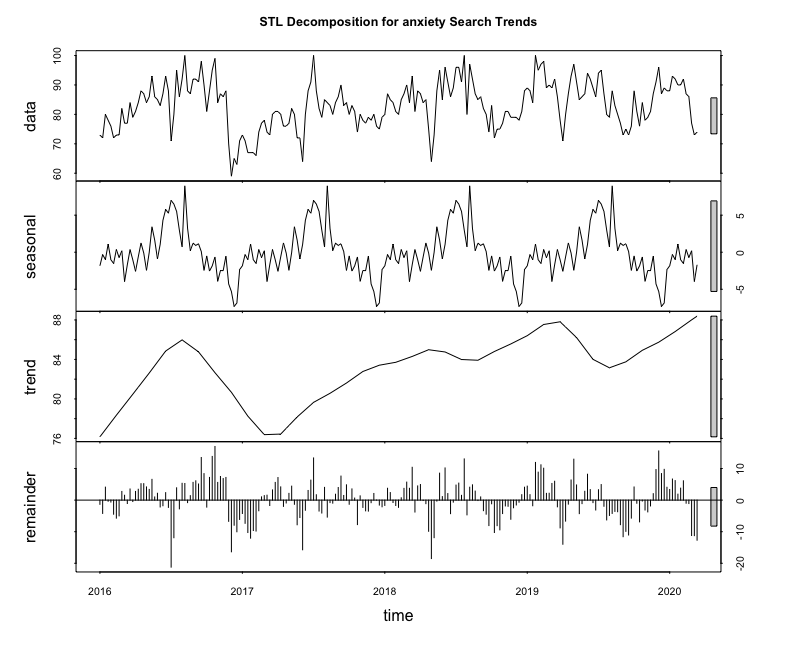
Figure 2: STL Decomposition for Anxiety Search Trends. (Picture Credit: Original)
4.1.1. Depression Search Trends
The STL decomposition for "depression" (Figure 1) shows a clear upward trend beginning in 2018 and sharply rising in early 2020, coinciding with the pandemic onset. The seasonal component exhibits regular fluctuations, with peaks typically occurring during winter months, suggesting a seasonal pattern in public interest in depression. The remainder component highlights irregular spikes, particularly during 2020, indicating the impact of external factors such as the pandemic. These trends are in line with national data reported by Statistics Canada, which demonstrated a notable increase in symptoms of depression among Canadians during the pandemic. The study identified a 14.62% rise in depression symptoms, particularly in those experiencing loneliness and financial hardship, factors closely tied to the pandemic’s social and economic impacts [9].
4.1.2. Anxiety Search Trends
For "anxiety," (Figure 2) the long-term trend follows a similar pattern with a steady rise beginning in 2019 and accelerating in 2020. The seasonal variations show less pronounced but consistent fluctuations, reflecting a year-round interest. The remainder also shows larger fluctuations in 2020, reinforcing the idea that anxiety-related searches were impacted by pandemic-driven events. Like depression, anxiety searches also showed a steep increase in early 2020. This mirrors the findings of Rao et al., who reported a 12.89% increase in anxiety symptoms during the same period, largely attributed to pandemic-induced uncertainty and stress [9].
4.2. Arima Forecasting Results

Figure 3: Arima Forecast For Depression Search Trends. (Picture Credit: Original)
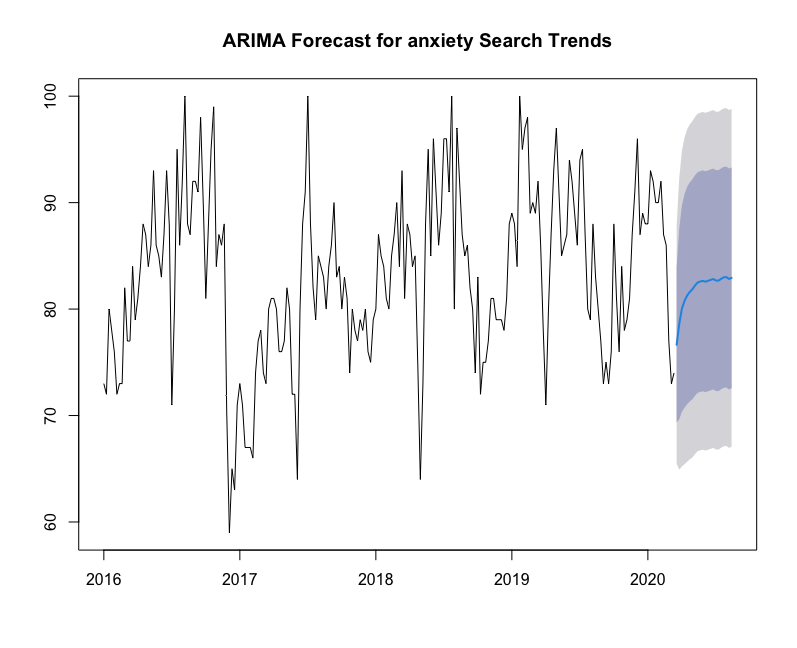
Figure 4: ARIMA Forecast For Anxiety Search Trends. (Picture Credit: Original)
Table 1: Accuracy Test for Both Arima Model.
Metric | Depression (Training) | Depression (Test) | Anxiety (Training) | Anxiety (Test) |
ME | 0.005 | 6.240 | 0.046 | 0.390 |
RMSE | 6.786 | 9.955 | 5.654 | 4.070 |
MAE | 5.141 | 8.252 | 4.424 | 3.013 |
MPE | -0.807 | 6.927 | -0.422 | 0.321 |
MAPE | 6.779 | 9.720 | 5.375 | 3.667 |
MASE | 0.489 | 0.785 | 0.547 | 0.373 |
ACF1 | -0.041 | 0.428 | -0.023 | 0.163 |
Theil’s U | N/A | 1.341 | N/A | 0.649 |
The ARIMA model forecast suggests that without the pandemic, depression-related searches would have remained relatively stable (Figure 3). However, actual searches in 2020 substantially exceed the forecasted values, particularly during the early months of the pandemic. The RMSE of 9.96 for the test set indicates a substantial deviation, highlighting the pandemic’s influence on rising public concern about depression.
Similarly, the forecast for anxiety search trends shows that actual search interest during 2020 surpasses predictions, particularly in the first half of the year (Figure 4). The RMSE of 4.07, while smaller than for depression, still demonstrates that the pandemic drove a noticeable increase in anxiety-related searches.
4.3. CUSUM Change Point Detection
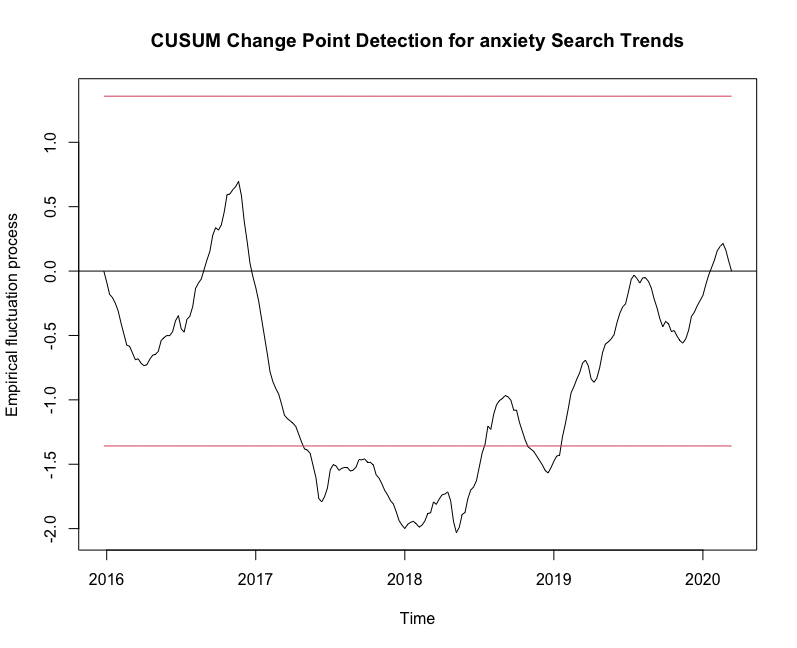
Figure 5: CUSUM Change Point Detection for Depression. (Picture Credit: Original)
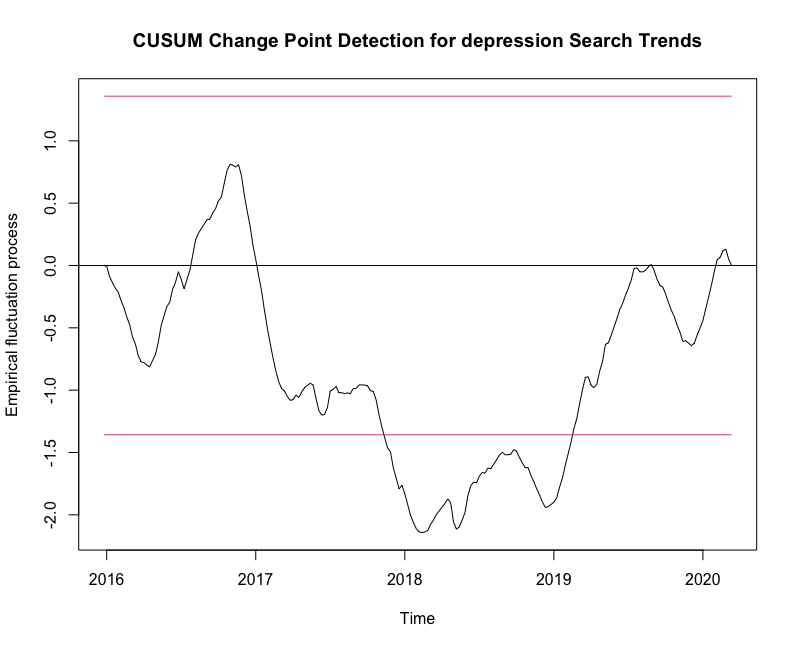
Figure 6: CUSUM Change Point Detection for Depression. (Picture Credit: Original)
The CUSUM analysis identifies substantial change points in early 2020, which correspond to the pandemic’s onset and subsequent lockdown measures. These results indicate that the public's interest in depression increased abruptly in response to external shocks.
Similar patterns are observed for anxiety, with notable change points in early 2020. This suggests that the pandemic and its associated uncertainties caused an immediate and notable shift in anxiety-related search behaviors.
4.4. Result and Further
While analysis based on STL decomposition, ARIMA modeling, and CUSUM change point detection provided insights into the evolution of public interest in mental health during the COVID-19 pandemic, future research could delve into the long-term effects. Xiong highlighted in a systematic review that anxiety, depression, and PTSD symptoms increased substantially during the pandemic across various demographic groups [10]. Expanding this analysis to explore how mental health search trends persist or decline post-pandemic, particularly among vulnerable populations, would offer deeper insights into the lasting psychological impact of COVID-19.
5. Conclusion
The analysis conducted in this study highlights the notable impact of the COVID-19 pandemic on public interest in mental health issues, particularly depression and anxiety. Time series analysis revealed sharp increases in search trends for these conditions, particularly in early 2020, coinciding with the onset of the pandemic and related lockdown measures. The ARIMA forecast further confirmed that these trends deviated substantially from expected pre-pandemic patterns, indicating heightened public concern about mental health.
These results reflect the substantial mental health challenges exacerbated by COVID-19, as observed in national data and surveys. The survey linked these symptoms to negative pandemic-related experiences, including loneliness, financial stress, and personal relationship challenges. The confluence of these findings suggests that COVID-19 exacerbated existing mental health challenges and introduced new stressors, underscoring the urgent need for public health interventions that address mental health crises during such global events.
Future research should further explore the long-term mental health consequences of the pandemic, particularly for populations that were disproportionately affected. By better understanding these patterns, policymakers can develop targeted strategies to mitigate the psychological toll of future public health emergencies.
References
[1]. WHO. COVID-19 pandemic triggers 25% increase in prevalence of anxiety and depression worldwide. World Health Organization; 2022. Available at: https://www.who.int/news/item/02-03-2022-covid-19-pandemic-triggers-25-increase-in-prevalence-of-anxiety-and-depression-worldwide
[2]. Robinson E, Sutin AR, Daly M, Jones A. Comparison of mental health symptoms before and during the covid-19 pandemic: evidence from a systematic review and meta-analysis of 134 cohorts. BMJ. 2022. Available at: https://www.bmj.com/content/376/bmj-2022-068804
[3]. Hao Y. COVID-19 and mental health search terms. Kaggle; 2020 Jun 15 [cited 2024 Oct 14]. Available from: https://www.kaggle.com/datasets/luckybro/mental-health-search term/data?select=search_term_canada_17.xlsx
[4]. Huang, Y., Xu, C., Ji, M. et al. Medical service demand forecasting using a hybrid model based on ARIMA and self-adaptive filtering method. BMC Med Inform Decis Mak 20, 237 (2020). https://doi.org/10.1186/s12911-020-01256-1
[5]. Ouyang Z, Ravier P, Jabloun M. STL Decomposition of Time Series Can Benefit Forecasting Done by Statistical Methods but Not by Machine Learning Ones. Engineering Proceedings. 2021; 5(1):42. https://doi.org/10.3390/engproc2021005042
[6]. Schaffer, A.L., Dobbins, T.A. & Pearson, SA. Interrupted time series analysis using autoregressive integrated moving average (ARIMA) models: a guide for evaluating large-scale health interventions. BMC Med Res Methodol 21, 58 (2021). https://doi.org/10.1186/s12874-021-01235-8
[7]. Koepcke, L., Kretzberg, J. Change point detection for neuronal data with CUSUM and classification methods. BMC Neurosci 14 (Suppl 1), P223 (2013). https://doi.org/10.1186/1471-2202-14-S1-P223
[8]. Li, Y., Whelan, M., Hobbs, L. et al. Data-driven approach of CUSUM algorithm in temporal aberrant event detection using interactive web applications. Can J Public Health 107, e9–e15 (2016). https://doi.org/10.17269/cjph.107.5228
[9]. Rao S, Dimitropoulos G, Williams JVA, Sharifi V, Fahim M, Munir A, Bulloch AGM, Patten SB. Associations between negative COVID-19 experiences and symptoms of anxiety and depression: a study based on a representative Canadian national sample. Health Promot Chronic Dis Prev Can. 2024;44(2):56-65. https://doi.org/10.24095/hpcdp.44.2.03
[10]. Xiong J, Lipsitz O, Nasri F, et al. Impact of COVID-19 pandemic on mental health in the general population: A systematic review. J Affect Disord. 2020;277:55-64. doi:10.1016/j.jad.2020.08.001
Cite this article
Han,J. (2025). Assessing the Pandemic's Impact on Mental Health Awareness: A Canadian Perspective Using Time Series Analysis . Advances in Economics, Management and Political Sciences,147,1-9.
Data availability
The datasets used and/or analyzed during the current study will be available from the authors upon reasonable request.
Disclaimer/Publisher's Note
The statements, opinions and data contained in all publications are solely those of the individual author(s) and contributor(s) and not of EWA Publishing and/or the editor(s). EWA Publishing and/or the editor(s) disclaim responsibility for any injury to people or property resulting from any ideas, methods, instructions or products referred to in the content.
About volume
Volume title: Proceedings of ICFTBA 2024 Workshop: Finance's Role in the Just Transition
© 2024 by the author(s). Licensee EWA Publishing, Oxford, UK. This article is an open access article distributed under the terms and
conditions of the Creative Commons Attribution (CC BY) license. Authors who
publish this series agree to the following terms:
1. Authors retain copyright and grant the series right of first publication with the work simultaneously licensed under a Creative Commons
Attribution License that allows others to share the work with an acknowledgment of the work's authorship and initial publication in this
series.
2. Authors are able to enter into separate, additional contractual arrangements for the non-exclusive distribution of the series's published
version of the work (e.g., post it to an institutional repository or publish it in a book), with an acknowledgment of its initial
publication in this series.
3. Authors are permitted and encouraged to post their work online (e.g., in institutional repositories or on their website) prior to and
during the submission process, as it can lead to productive exchanges, as well as earlier and greater citation of published work (See
Open access policy for details).
References
[1]. WHO. COVID-19 pandemic triggers 25% increase in prevalence of anxiety and depression worldwide. World Health Organization; 2022. Available at: https://www.who.int/news/item/02-03-2022-covid-19-pandemic-triggers-25-increase-in-prevalence-of-anxiety-and-depression-worldwide
[2]. Robinson E, Sutin AR, Daly M, Jones A. Comparison of mental health symptoms before and during the covid-19 pandemic: evidence from a systematic review and meta-analysis of 134 cohorts. BMJ. 2022. Available at: https://www.bmj.com/content/376/bmj-2022-068804
[3]. Hao Y. COVID-19 and mental health search terms. Kaggle; 2020 Jun 15 [cited 2024 Oct 14]. Available from: https://www.kaggle.com/datasets/luckybro/mental-health-search term/data?select=search_term_canada_17.xlsx
[4]. Huang, Y., Xu, C., Ji, M. et al. Medical service demand forecasting using a hybrid model based on ARIMA and self-adaptive filtering method. BMC Med Inform Decis Mak 20, 237 (2020). https://doi.org/10.1186/s12911-020-01256-1
[5]. Ouyang Z, Ravier P, Jabloun M. STL Decomposition of Time Series Can Benefit Forecasting Done by Statistical Methods but Not by Machine Learning Ones. Engineering Proceedings. 2021; 5(1):42. https://doi.org/10.3390/engproc2021005042
[6]. Schaffer, A.L., Dobbins, T.A. & Pearson, SA. Interrupted time series analysis using autoregressive integrated moving average (ARIMA) models: a guide for evaluating large-scale health interventions. BMC Med Res Methodol 21, 58 (2021). https://doi.org/10.1186/s12874-021-01235-8
[7]. Koepcke, L., Kretzberg, J. Change point detection for neuronal data with CUSUM and classification methods. BMC Neurosci 14 (Suppl 1), P223 (2013). https://doi.org/10.1186/1471-2202-14-S1-P223
[8]. Li, Y., Whelan, M., Hobbs, L. et al. Data-driven approach of CUSUM algorithm in temporal aberrant event detection using interactive web applications. Can J Public Health 107, e9–e15 (2016). https://doi.org/10.17269/cjph.107.5228
[9]. Rao S, Dimitropoulos G, Williams JVA, Sharifi V, Fahim M, Munir A, Bulloch AGM, Patten SB. Associations between negative COVID-19 experiences and symptoms of anxiety and depression: a study based on a representative Canadian national sample. Health Promot Chronic Dis Prev Can. 2024;44(2):56-65. https://doi.org/10.24095/hpcdp.44.2.03
[10]. Xiong J, Lipsitz O, Nasri F, et al. Impact of COVID-19 pandemic on mental health in the general population: A systematic review. J Affect Disord. 2020;277:55-64. doi:10.1016/j.jad.2020.08.001





